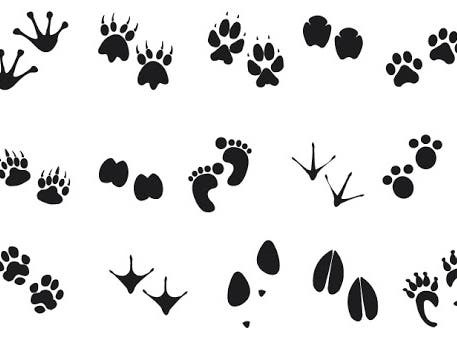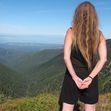Wild Ousts ‘Beyond Hope’
We, earth’s evolved serial killer ape, perhaps in effort to soothe the reality of our harms out of shame, fear or even more altruistic feelings, are juggling with ‘The Way’ to change our ways. In the context of today’s heady scientific culture, logic is used to provoke mass mind shift, such as in the writings of Daniel Quinn, Peter Singer and Tom Regan. Some still attempt to inspire mass spiritual change, such as Deepok Chopra, Will Tuttle and Deb Ozarko.
In Beyond Hope: Letting Go of a World in Collapse, Ozarko concedes that it’s too late for mass human change to undo the damage we humans have wreaked, releasing us from any nature duty to amend our harms, calling us instead to turn inward to liberate our Soul from our dystopian culture ensnaring us. She flirts with yet essentially gives up on humans’ symbiotic place in animalistic wild community, on innate interconnection with Earth (p. 11). In lieu of wild compassionate actions impelled through connection with earth’s life grounded in togetherness, Ozarko focuses on the inner world of Soul, for our inspirations to be self-centered. Wild beings are otherized, with option to redeem our harms to them.
The deepest truth is that we too are wild beings, we are them, a part of the wild community of life, with our wildness not so much dormant as denied. Whether we realize and return to our ecological roles, our wild reverence and role remains, just in a void. To turn inward is to disconnect from our primal compassion. Opening ones’ wild as a part of the wild community is to engage our animal compassion, to compel our symbiotic wild action.
While Ozarko’s way of Soul is living in the present, it is not as a member of wild belongingness. She sees the self’s Soul as humans’ true identity from which joy, life and peace reside. This thinking gives humans an easy way out of connection that inspires deep healing, the kind of atonement action naturally flowing from our species’ harms. She eloquently paints an accurate picture of our harms, yet her Soul solution is futile without enlivening our animal beings to reconnect and reengage with wildness. Retreating into Soul is unlikely to inspire nature warrior action, more likely to serve as a mere escape and further disconnect like standard new age ethos. Accepting earth’s reality inspires stronger re-embracing, re-becoming our reconnected selves; any less ensures marching lock step, some with a calm aura, within the death machine path we took.
In reintegrating with wild life as the whole is struggling and dying in end times, we still find meaning, have real impact felt by many. The reconnection needed is not between our individual Soul and body, but between our primal being and the beings of so many wild others. Focusing on our own Soul has been tried for thousands of years, and does nothing practical for wild others, nothing even deeply knowing others, nothing changing disinterest, distraction, avoidance, denial and ignorance. Focus on Self is achieving nothing more than ‘activating presence’ in a world humans continuingly kill. ‘Live fully, Love hard, and Let go’ is fine if you’ve earned it through hands on caring for earth, but not for disavowing nature’s cries while feigning individual happiness. Knowing this is the only way to live with truth and security of your essence.
Beyond Hope is an embrace of religious doctrine and dogma. ”Ultimately, my greatest desire for this book is to break the cycle of samsara once and for all so that we never incarnate among such lunacy again.” Ozarko refers to Gaea as a purposeful deity deploying seismic and volcanic activity against the harmful humans that annoy “Her.” She offers “near death” phenomena as evidence for her supernatural “Soul” conceptualization. This type of belief system is along the lines of Derrick Jensen’s tale of salmon giving him permission to eat them so long as he’s earned the privilege through his actions to save them.
Primal Soul is a wild community connectedness. Dropping supremacy of inward Soul seeking is essential for dropping supremacist excuses for our harm. If Gaia had agency to heal herself, she’d have had agency to prevent the harm we’ve caused. Yet both the agency and responsibility to atone for our species’ harms is within us, even if the final outcome is less than a return, more of a new indigenous thrivingway that calls the wild community to celebrate life. Our eternal Soul is not a supreme force of god, but all life has a striving toward togetherness that brings forth the contentment and happiness lost to our unnatural speciesist supremacy, our Soul disconnect from wild others..
Ozarko’s well elucidated description of ecological collapse is raw truth, and there’s no hope for returning all that we’ve killed. Collective cultural suicide of ourselves and killing of so many others mounts. No doubt. So while our civilized predatory killingway ravages onward, do we turn inward to find our lost joy, or respond to our lifeway’s atrocities with compassion in action, while we seek forgiveness from our wild relations? ‘The Way’ is grounded neither in science nor religion, but restoring thriving with wild compassion.
Rewilding Resources
Bringing Back the Bush; the Bradley Method of Bush Regeneration, Joan Bradley
Bringing Nature Home: How You Can Sustain Wildlife with Native Plants, Douglas Tallamy
Walking on two legs: a pathway of Indigenous restoration and reconciliation in fire-adapted landscapes
Worldwide, Indigenous peoples are leading the revitalization of their/our cultures through the restoration of ecosystems in which they are embedded, including in response to increasing “megafires.” Concurrently, growing Indigenous-led movements are calling for governments to implement Indigenous rights, titles and treaties, and many settler-colonial governments are committing to reconciliation with Indigenous peoples and to implementing the United Nations Declaration on the Rights of Indigenous Peoples. Yet, despite growing recognition that just and effective conservation is only possible through partnerships with, or led by, Indigenous peoples, decolonizing approaches to restoration have received insufficient attention. However, reconciliation will be incomplete without Indigenous-led restoration of Indigenous lands, knowledges, and cultures. In this article, we introduce the concept of “walking on two legs” to guide restoration scientists and practitioners in advancing the interconnected processes of Indigenous-led restoration and reconciliation in Indigenous territories. As an action-oriented framework
articulated by Secwépemc Elder Ronald E. Ignace, “walking on two legs” seeks to bring Indigenous knowledges into balance with western scientific knowledge in service of upholding an Indigenous stewardship ethic that is embedded in Indigenous ways of relating to land and embodies principles of respect, reciprocity, and responsibility. Grounding this discussion in the context of fire-adapted ecosystems of western Canada and unceded and traditional Secwépemc territory, Secwepemcúl̓
ecw, we argue that walking on two legs, along with principles of reconciliation, offers a pathway to uphold respectful relationships with Indigenous peoples, knowledges, and territories through Indigenous-led restoration.




